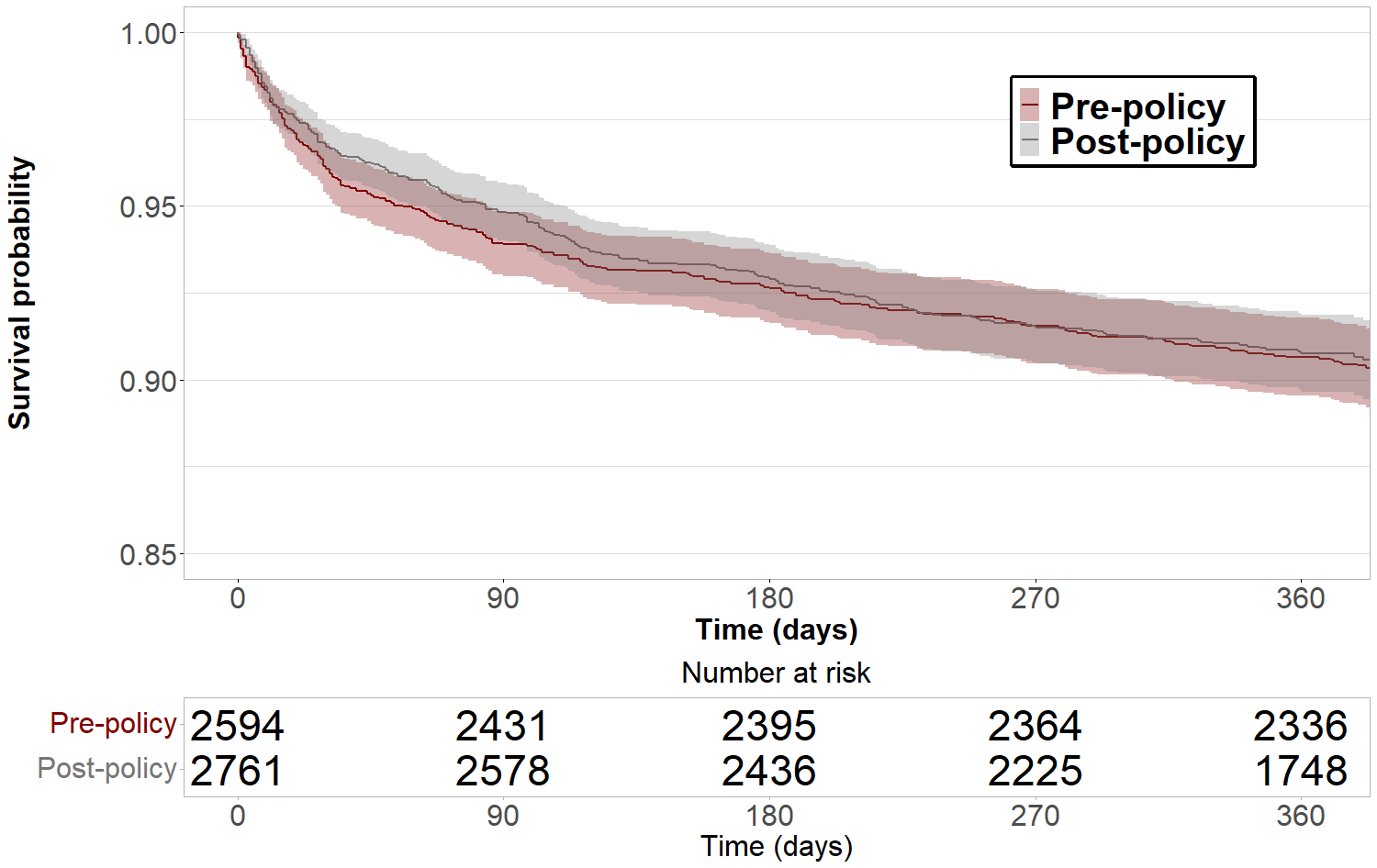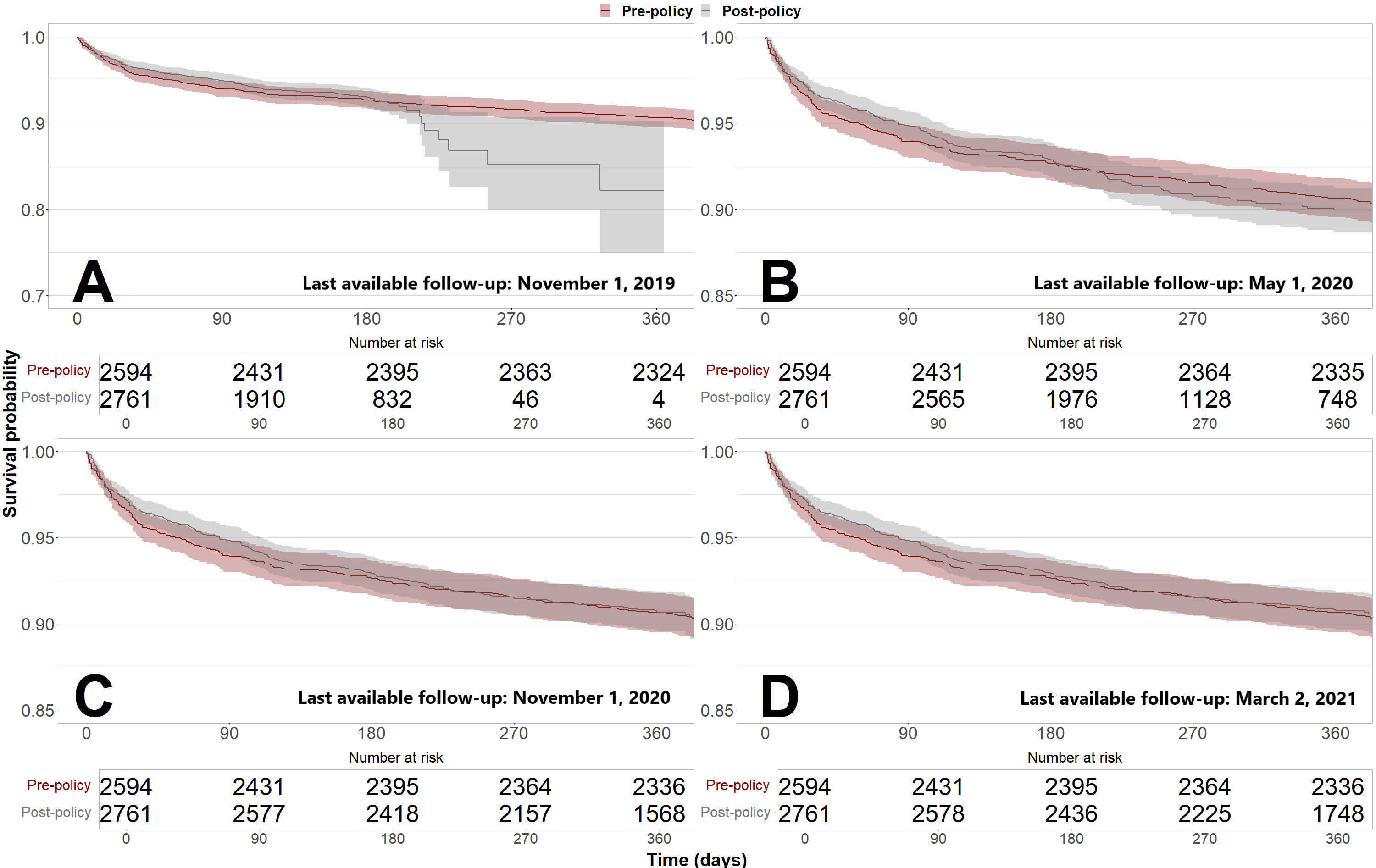An Updated Estimate of Post-Transplant Survival After Implementation of the New Donor Heart Allocation Policy
1Pritzker School of Medicine, University of Chicago, Chicago, IL, 2Advocate Heart Institute, Advocate Christ Medical Center, Chicago, IL, 3Department of Medicine, University of Chicago, Chicago, IL
Meeting: 2022 American Transplant Congress
Abstract number: 1119
Keywords: Heart, Heart transplant patients, Methodology, Survival
Topic: Clinical Science » Heart » 63 - Heart and VADs: All Topics
Session Information
Session Time: 7:00pm-8:00pm
 Presentation Time: 7:00pm-8:00pm
Presentation Time: 7:00pm-8:00pm
Location: Hynes Halls C & D
*Purpose: Published estimates showing lower post-transplant survival after implementation of the new heart allocation policy may be biased downward due to incomplete follow-up on surviving recipients. A fundamental assumption of the Kaplan-Meier survival estimator is that censoring is statistically independent of survival time, and heavily censored post-policy survival data could lead to a lower Kaplan-Meier estimate than the true population survival rate. We aimed to evaluate this hypothesis by reassessing the impact of the new allocation policy on post-transplant survival with more complete recipient follow-up.
*Methods: Using the Scientific Registry of Transplant Recipients, we used the Kaplan-Meier method to estimate 1-year post-transplant survival for cohorts transplanted pre-policy (November 1, 2016, to October 31, 2017) and post-policy (November 1, 2018, to October 31, 2019) with follow-up through March 2, 2021, stratified by treatment type. We adjusted for changes in recipient population over time with a multivariable Cox proportional hazards model. To demonstrate the bias created by inadequate follow-up, we repeated the analysis while restricting recipient follow-up at various calendar dates.
*Results: Programs transplanted 2594 patients in the pre-policy cohort and 2761 patients in the post-policy cohort. With follow-up through March 2, 2021, unadjusted 1-year post-transplant survival was 90.6% in the pre-policy cohort and 90.8% in the post-policy cohort (aHR = 0.93, P = 0.45). When follow-up was restricted to November 1, 2019, post-policy survival was biased downward (1-year: 82.2%). Patients bridged with extracorporeal membrane oxygenation experienced greater 1-year survival after policy change (69.3% pre-policy vs. 87.2% post-policy).
*Conclusions: With adequate recipient follow-up, there was no significant difference in 1-year post-transplant survival between policy periods. Informative censoring bias should be considered in any cohort study with a similar design that analyzes transplant registry data from the United States.
To cite this abstract in AMA style:
Lazenby KA, Narang N, Pelzer KM, Ran G, Parker WF. An Updated Estimate of Post-Transplant Survival After Implementation of the New Donor Heart Allocation Policy [abstract]. Am J Transplant. 2022; 22 (suppl 3). https://atcmeetingabstracts.com/abstract/an-updated-estimate-of-post-transplant-survival-after-implementation-of-the-new-donor-heart-allocation-policy/. Accessed December 15, 2025.« Back to 2022 American Transplant Congress


